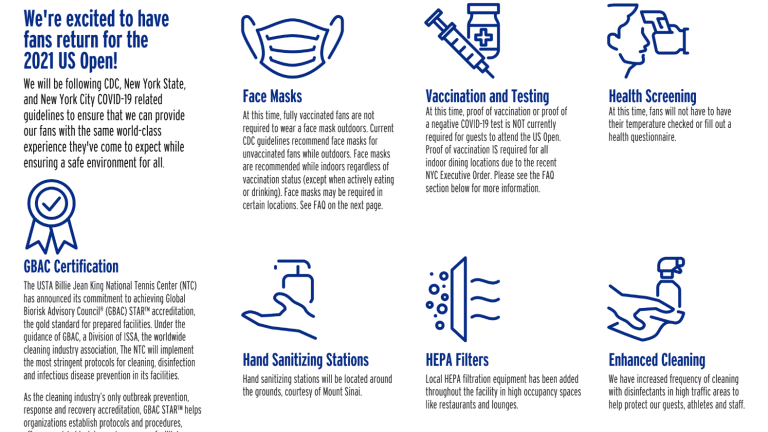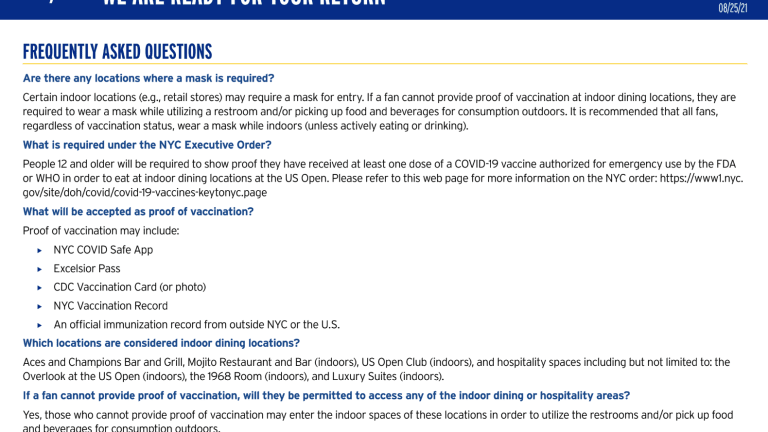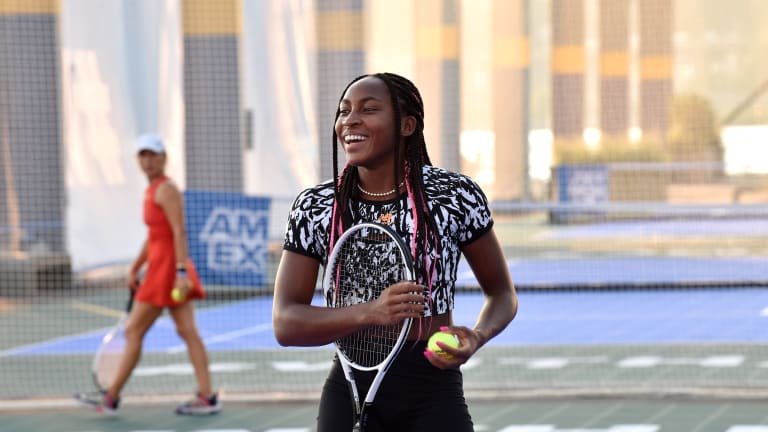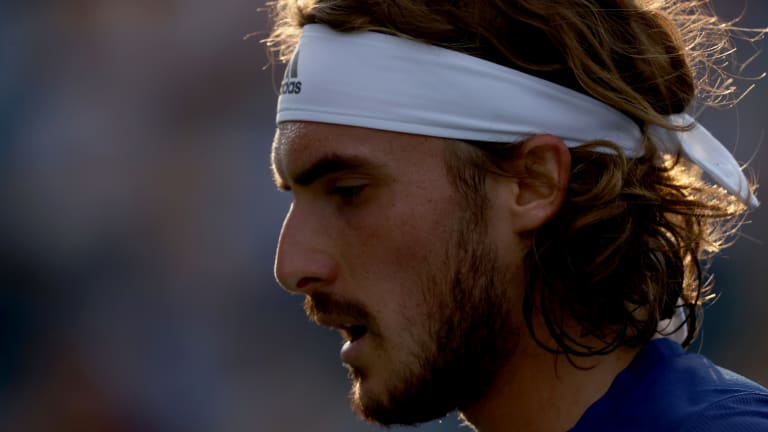US Open tournament director, USTA CEO, doctors address Covid protocols and concerns before fans arrive at Flushing Meadows
By Aug 25, 2021US Open revamps mixed doubles format, adds $1 million prize to incentivize "biggest names in the sport"
By Feb 11, 2025US Open adds a 15th day, moves to Sunday start in 2025
By Jan 29, 2025Post-2024 US Open WTA storylines: The Age of Aryna; what's next for Swiatek and Gauff?
By Sep 09, 2024Post-2024 US Open ATP storylines: The race between Alcaraz and Sinner for No. 1 ... and more
By Sep 09, 2024Jannik Sinner’s US Open title run won’t clear the air around him entirely
By Sep 09, 2024Taylor Fritz fails in US Open final, but hope springs for American men's tennis
By Sep 09, 2024Jannik Sinner storms to second major title, defeats Swift, Kelce-backed Taylor Fritz at US Open
By Sep 08, 2024Jessica Pegula's willingness to take chances paid off at the US Open
By Sep 08, 2024Aryna Sabalenka won her first US Open by learning from her past heartbreaks in New York
By Sep 08, 2024US Open tournament director, USTA CEO, doctors address Covid protocols and concerns before fans arrive at Flushing Meadows
"The goal is not to prevent all cases of COVID," said Dr. Brian Hainline of the US Open, which will permit 100 percent crowd capacity. "The goal really is to be certain that we don't have an outbreak of COVID that's going to be unusual or that we would regret."
Published Aug 25, 2021
Advertising
Advertising

No proof of vaccination is required to attend the US Open, but it is required for indoor dining.

Fans are not required to wear masks outdoors—which includes Arthur Ashe and Louis Armstrong Stadiums, even when their roofs are closed.
Advertising
Advertising
Advertising

With Serena Williams, Roger Federer and Rafael Nadal all withdrawing from the US Open, Coco Gauff will be one of the main attractions at Flushing Meadows.
© 2021 Getty Images
Advertising
Advertising

Stefanos Tsitsipas' comments about Covid vaccines last week in Cincinnati understandably rankled many.
© Getty Images